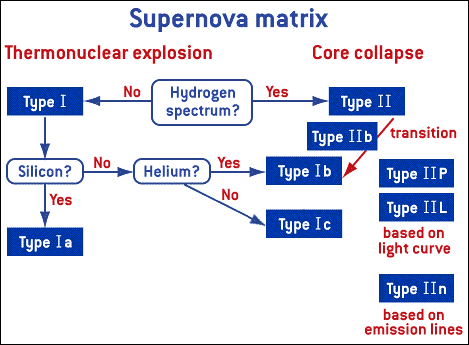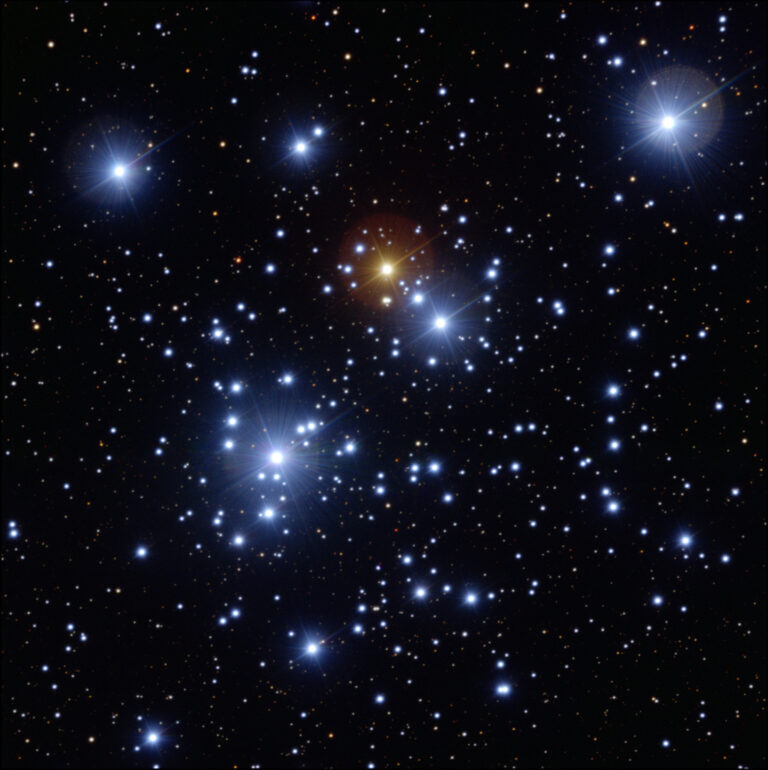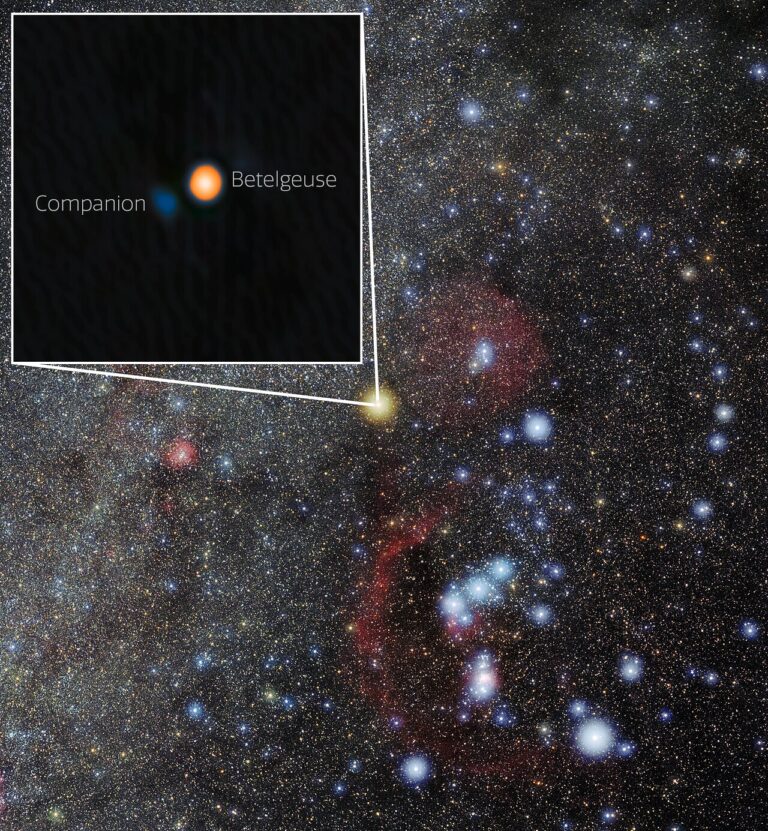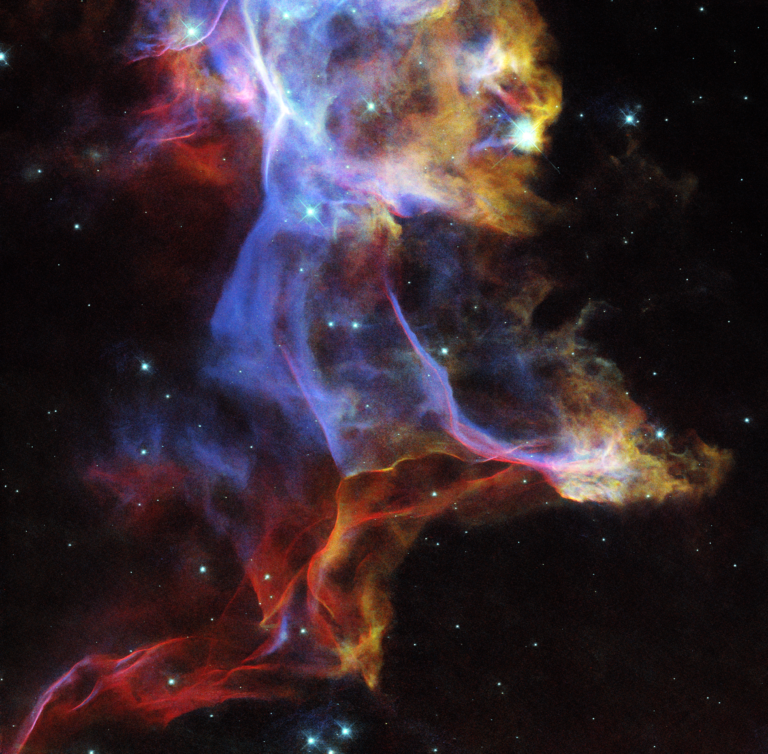Key Takeaways:
- Supernovae are classified primarily based on their spectral characteristics, notably the presence or absence of hydrogen lines, leading to type I (no hydrogen) and type II (hydrogen present) classifications.
- Type Ia supernovae, originating from white dwarf explosions in binary systems, exhibit consistent maximum brightness, serving as valuable standard candles for cosmological distance measurements.
- Types Ib/c and IIn supernovae demonstrate significantly higher energy outputs than other types and are associated with long-duration gamma-ray bursts (GRBs).
- Further sub-classifications within type II supernovae (IIP, IIL, IIb) and type I supernovae (Ib, Ic) exist, reflecting variations in their spectral evolution and progenitor star characteristics.
Type Ia supernovae are the exception. They occur in binary systems, where matter from a normal companion star flows onto a white dwarf. The white dwarf gradually gains mass until it becomes unstable and explodes. The maximum brightnesses of type Ia supernovae show little variation, a feature that makes them important “standard candles” that help astronomers determine distances to other galaxies.
Supernovae of type Ib/c and type IIn display energies 10 or more times greater than other supernovae. These events are associated with long-duration gamma-ray bursts (GRBs), and scientists are investigating the relationships of other supernova types with long GRBs.
A white dwarf accreting matter from a companion star may become a Type Ia supernova. No hydrogen is found in its spectrum. Calcium, oxygen, and silicon appear in its spectrum at peak brightness. This type of supernova is seen in all types of galaxies.
Example: SN 2001el in NGC 1448
This supernova types represent the collapse of a massive star. No hydrogen or silicon lines are present in the spectrum, but type Ib spectra show helium. Found only in spiral galaxies, type Ib and Ic supernovae are thought to be associated with massive stars that have lost their hydrogen envelopes either by strong stellar winds (as in Wolf-Rayet stars) or mass loss to a binary companion. Light from these supernovae tends to be more highly polarized, implying more asymmetric explosions among this class.
Examples: SN 1998bw (GRB 980425) and SN 2003dh (GRB 030329)
Prominent hydrogen lines are seen in this supernova type’s spectrum. These events are associated with regions of recent star formation. They are not found in elliptical or early-type spiral galaxies. This class often is subdivided as IIP (plateau) and IIL (linear) based on how the optical brightness declines. Type IIL supernovae originate from stars retaining much smaller hydrogen envelopes (approximately 1 to 2 solar masses) than progenitors of IIP (typically 10 solar masses) supernovae.
Example: SN 1987a in the Large Magellanic Cloud
A strong hydrogen spectrum is present with narrow emission lines for this type of supernova. IIn supernovae are thought to originate from the collapse of massive stars embedded in dense shells of material ejected in the decades leading up to the explosion.
Example: SN 1998s in NGC 3877
The spectrum of this type of supernova contains prominent hydrogen lines right after the event but later transitions to something resembling a Type Ib/c supernova. The progenitor is thought to be a red supergiant that has lost most of its hydrogen envelope either through strong stellar winds or through mass loss to a nearby companion star. IIb supernovae are seen as a “missing link” between supernovae that have retained their envelopes and those that have not.
Example: SN 1993j in M81










